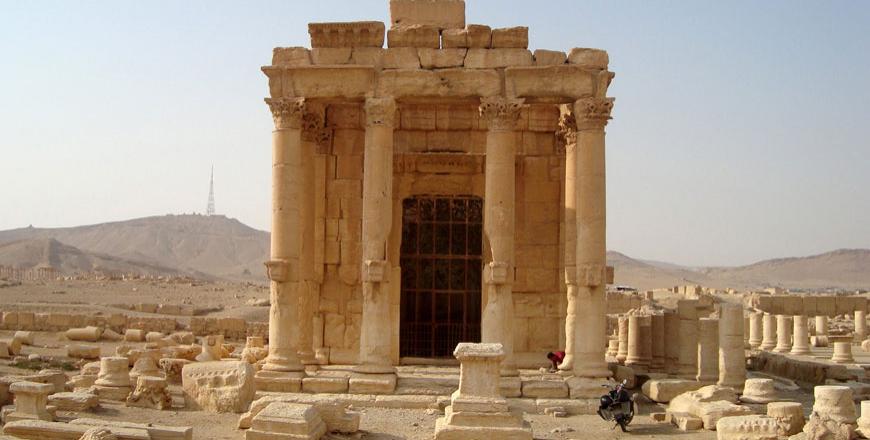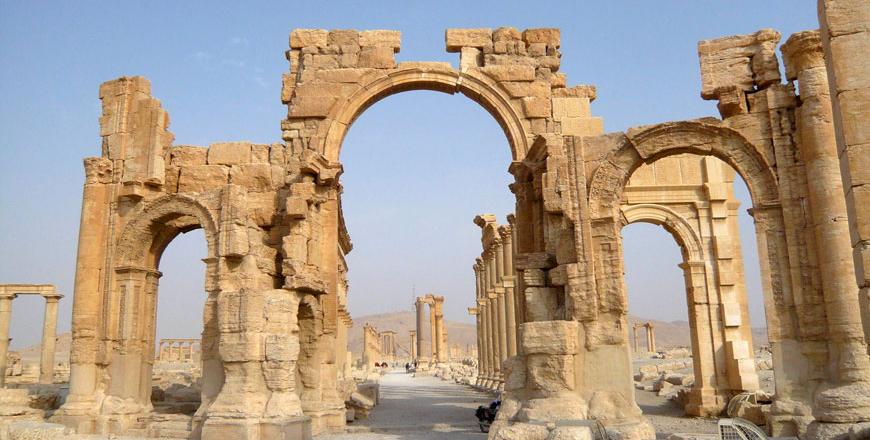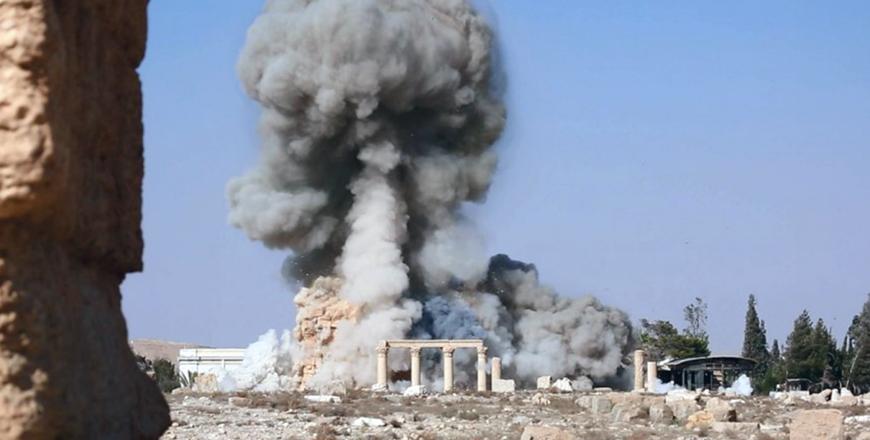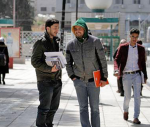You are here
Daesh blows up Palmyra temple in ‘new war crime’
By AFP - Aug 24,2015 - Last updated at Aug 24,2015

A general view shows the temple of Baal Shamin in the historical city of Palmyra, Syria, October 26, 2009. Daesh’s demolition of a renowned ancient Roman temple in the Syrian city of Palmyra is a war crime that targeted a historic symbol of the country’s diversity, the UN cultural agency UNESCO said on Monday (Reuters photo)
BEIRUT — The Daesh terror group has blown up a famed temple in Syria's ancient Palmyra, in an act the UN condemned as a war crime and an "immense loss" for humanity.
The destruction of the Baal Shamin temple, considered the second-most significant in ancient Palmyra, raised concerns for the rest of the UNESCO World Heritage sites.
It comes only days after Daesh beheaded the 82-year-old retired chief archaeologist of Palmyra, sparking widespread condemnation.
"This destruction is a new war crime and an immense loss for the Syrian people and for humanity," said Irina Bokova, the head of the UN cultural watchdog UNESCO, calling for the perpetrators to be held accountable.
"Daesh is killing people and destroying sites, but cannot silence history and will ultimately fail to erase this great culture from the memory of the world," Bokova said in a statement.
Syria's antiquities chief Maamoun Abdulkarim told AFP the temple was destroyed on Sunday.
"Our worst fears are sadly being realised," Abdulkarim said.
Famed for its well-preserved Greco-Roman ruins, Palmyra was seized from government forces in May, prompting concerns Daesh might destroy it as it has heritage sites in parts of Syria and Iraq under its control.
Initially most of Palmyra’s best-known sites were left intact, though there were reports Daesh had mined them and the group reportedly destroyed a well-known statue of a lion outside the city’s museum.
“Daesh placed a large quantity of explosives in the temple of Baal Shamin today and then blew it up,” Abdulkarim said on Sunday.
“The cella [inner area of the temple] was destroyed and the columns around collapsed,” he said.
‘Pearl of the desert’
The Syrian Observatory for Human Rights, a Britain-based group that monitors the country’s civil war, confirmed the destruction of the temple.
But the observatory said Baal Shamin had been destroyed a month ago — a discrepancy which could not be immediately explained as information on Syria’s civil war is often unclear.
Daesh captured Palmyra on May 21, sparking international concern about the fate of the heritage site described by UNESCO as of “outstanding universal value”.
Baal Shamin was built in 17 AD and expanded under the reign of Roman emperor Hadrian in 130 AD.
Known as the “Pearl of the Desert”, Palmyra is an oasis town about 210 kilometres northeast of Damascus.
Its name first appeared on a tablet in the 19th century BC as a stopping point for caravans travelling on the Silk Road and between the Gulf and the Mediterranean.
But it was under the Roman Empire — beginning in the first century BC and lasting another 400 years — that Palmyra rose to prominence.
Before the arrival of Christianity in the second century, Palmyra worshipped the Semitic god Bal, whose temple at Palmyra is considered the city’s most significant, along with the sun god Yarhibol and lunar god Aglibol.
Once a tourist site
Prior to the outbreak of the Syrian conflict in March 2011, more than 150,000 tourists visited Palmyra every year.
Daesh mined the ancient site in June before destroying the Lion Statue of Athena outside the Palmyra museum.
Most of the pieces in the museum were evacuated by antiquities staff before Daesh arrived, though the group has blown up several historic Muslim graves.
Daesh’s harsh version of Islam considers statues and grave markers to be idolatrous and the group has destroyed antiquities and heritage sites in territory under its control in Syria and Iraq.
Daesh has also executed hundreds of people in the city and surrounding area, many of them government employees, and infamously used children to shoot dead 25 Syrian government soldiers in Palmyra’s ancient amphitheatre.
Among those it has killed was Khaled Al Assaad, Palmyra’s antiquities chief for 50 years, who was beheaded last week after refusing to leave the city following the Daesh takeover.
In neighbouring Iraq, the jihadist group has razed some relics of ancient Mesopotamia and looted others to sell on the black market.
Syria’s war, which began with anti-regime protests, has spiralled into a multi-front conflict that has killed more than 240,000 people.
On Sunday, at least 31 people including eight children were killed in government air strikes on rebel-held Eastern Ghouta outside Damascus, the observatory said.
Rebels have fired barrages of rockets into Damascus from the region in recent days, with Syrian state media saying 13 had been injured by missile fire on Monday.
Related Articles
BEIRUT — A powerful blast in the ruins of Syria's ancient Palmyra raised fears Monday that the Daesh terror group has damaged another of the
BEIRUT/DAMASCUS — Daesh militants published photos on Tuesday purporting to show the destruction of a Roman-era temple in the ancient Syrian
Daesh fighters advanced to the gates of ancient Palmyra Thursday, raising fears the Syrian world heritage site could face destruction of the kind the jihadists have already wreaked in Iraq.

















